The history of Jews in Charleston, South Carolina, was related to the 1669 charter of the Carolina Colony, drawn up by the 1st Earl of Shaftesbury and his secretary John Locke, which granted liberty of conscience to all settlers, and expressly noted "Jews, heathens, and dissenters". Sephardic Jews from London were among the early settlers in the city and colony, and comprised most of its Jewish community into the early 1800s. In 1800 South Carolina had the largest Jewish population of any state of the United States.

Mikveh Israel Cemetery is the oldest Jewish cemetery in Philadelphia, Pennsylvania, giving evidence of a settled community as early as 1740. A number of outstanding patriots, pioneers, and other notables of the Jewish faith who made important contributions to the history and freedom of America during the Colonial and Revolutionary period were interred here, and for this reason, in 1959, by an act of Congress, the burial ground was designated as a unit of the Independence National Historical Park, while continuing to be maintained by the sponsoring Congregation Mikveh Israel. The cemetery was certified by the Philadelphia Historical Commission, and in 1971, it was listed on the National Register of Historic Places.

The Hebrew Cemetery in Richmond, Virginia, also known as Hebrew Burying Ground, dates from 1816. This Jewish cemetery, one of the oldest in the United States, was founded in 1816 as successor to the Franklin Street Burial Grounds of 1789. Among those interred here is Josephine Cohen Joel, who was well known in the early 20th century as the founder of Richmond Art Co. Within Hebrew Cemetery is a plot known as the Soldier's Section. It contains the graves of 30 Jewish Confederate soldiers who died in or near Richmond. It is one of only two Jewish military cemeteries outside of the State of Israel.

Kahal Kadosh Beth Elohim, founded in 1749, is one of the oldest Jewish congregations in the United States. The congregation is nationally significant as the place where ideas resembling Reform Judaism were first evinced. It meets in an architecturally significant 1840 Greek Revival synagogue located at 90 Hasell Street in Charleston, South Carolina. It was designed by Cyrus L. Warner.

Temple Sinai is an historic Reform synagogue located at 11 Church Street on the corner of West Hampton Avenue, in Sumter, South Carolina, United States. Built in 1912 of brick in the Moorish Revival style, Temple Sinai was added to the National Register of Historic Places on January 21, 1999. It is also known as Congregation Sinai, whose official name is the Sumter Society of Israelites. It also houses the Temple Sinai Jewish History Center which opened in June 2018.
Beth Elohim may refer to the following Jewish synagogues:
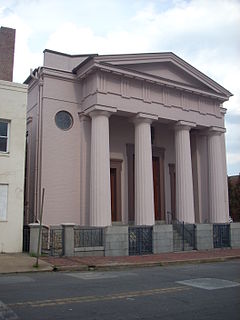
The Lloyd Street Synagogue is an 1845 Greek Revival style synagogue building in Baltimore, Maryland. One of the oldest synagogues in the United States, Lloyd Street was the first synagogue building erected in Maryland and is the third oldest synagogue building still standing in the United States. Lloyd Street is now owned by the Jewish Museum of Maryland and is open to the public as a museum in the Inner Harbor area of Baltimore. It is listed on the National Register of Historic Places.

Beth Ahabah is a Reform synagogue in Richmond, Virginia. Founded in 1789 by Spanish and Portuguese Jews as Kahal Kadosh Beth Shalome it is one of the oldest synagogues in the United States.

Temple Beth Elohim is a Reform synagogue located at 230 Screven Street in Georgetown, South Carolina.

Kahal Kadosh Beth Shalome was the first synagogue built in Richmond, Virginia; it was also the first Sephardic Kahal in Virginia. The creation of this community was a natural outgrowth of early immigration to North America and it was one of the first six synagogues built in British Colonies which would become known as United States of America. Kahal Kadosh Beth Shalome received its charter to operate 3 years after the Virginia General Assembly passed the Virginia Statute for Religious Freedom in 1786.
Gustavus Poznanski (1804–1879) was cantor and religious leader in Congregation Beth Elohim, Charleston, a pioneer of Reform Judaism in the Antebellum South.
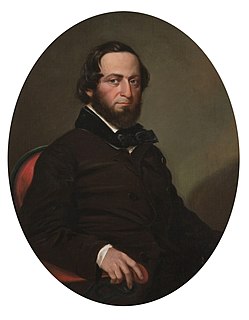
Edwin Warren Moïse (1810–1868) was an American medical doctor and Judge in the Confederate States of America.
Grace Peixotto, was an American brothel owner. She owned the "Big Brick" in Charleston, South Carolina.
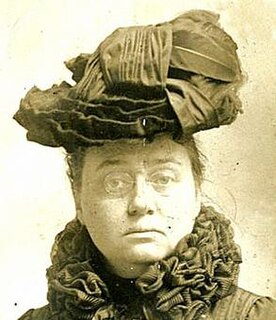
Sarah Visanska was an American clubwoman, president of the South Carolina Federation of Women's Clubs from 1910 to 1912.

The Charleston Cemeteries Historic District encompasses a cluster of 23 cemeteries north of downtown Charleston, South Carolina. Laid out on either side of Huguenin Street in the northern part of peninsular Charleston, they were laid out between 1849 and 1956, and represented a concentrated diversity in funerary art and cemetery landscape design practices. The oldest cemetery is Magnolia Cemetery, laid out in 1849 in the then-fashionable rural cemetery style.
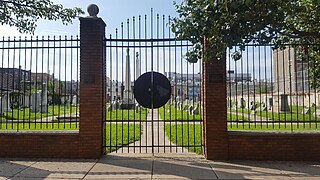
The Mikveh Israel Cemetery at 11th and Federal Streets is known as the Federal Street Burial Ground and is located in the Passyunk Square neighborhood of South Philadelphia. It was first called Beth Hahayim. It is one of three cemeteries belonging to Congregation Mikveh Israel, Philadelphia's oldest synagogue.
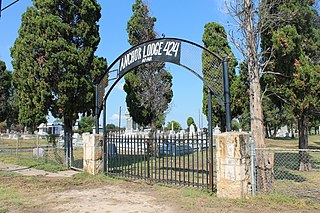
The Old San Antonio City Cemeteries Historic District, also known as the Eastside Cemetery Historic District, is a 103-acre complex collection of the oldest cemeteries in San Antonio, all established between 1853 and 1904. The individual cemeteries in the district were once part of of land acreage that the City of San Antonio parceled off and sold to local churches and other organizations to be used as their private cemeteries. It was listed on the National Register of Historic Places in 2000.
The cemeteries are notable for their layout and size, their diversity of design, their funerary monuments, and for the array of community leaders interred there. While burials in 24 of the cemeteries are predominantly Anglo, seven cemeteries are solely or largely African American. There are scattered Hispanic burials, though the majority of Hispanics in the 19th century were interred in San Fernando Cemetery, established in ca.l855 on San Antonio's west side.


















